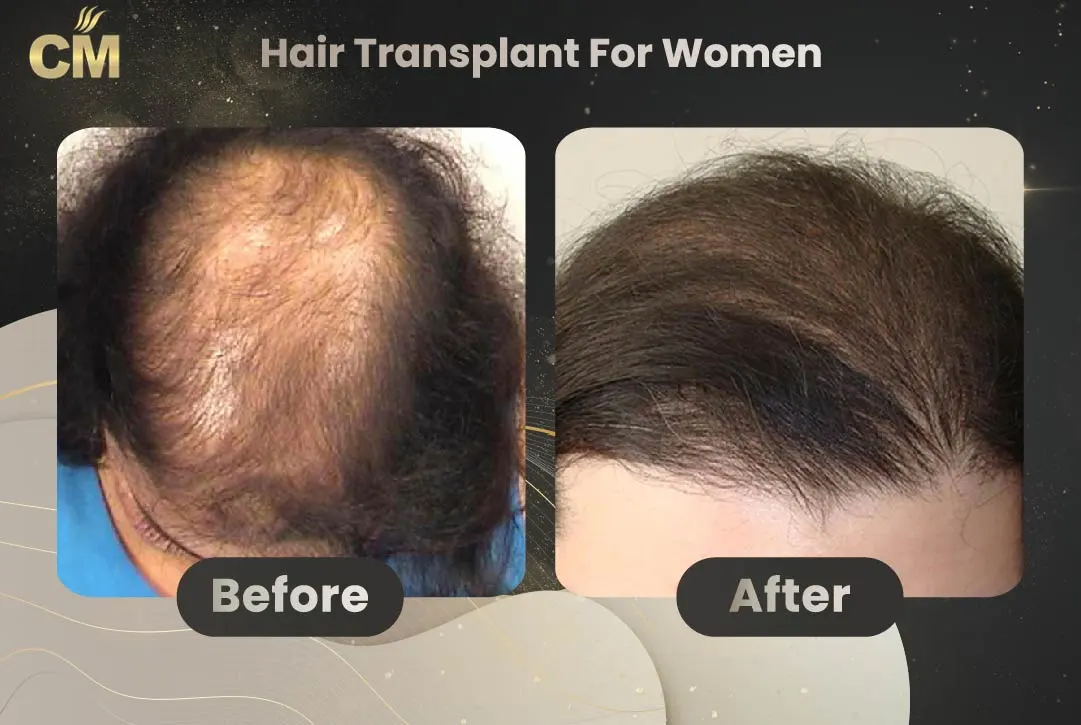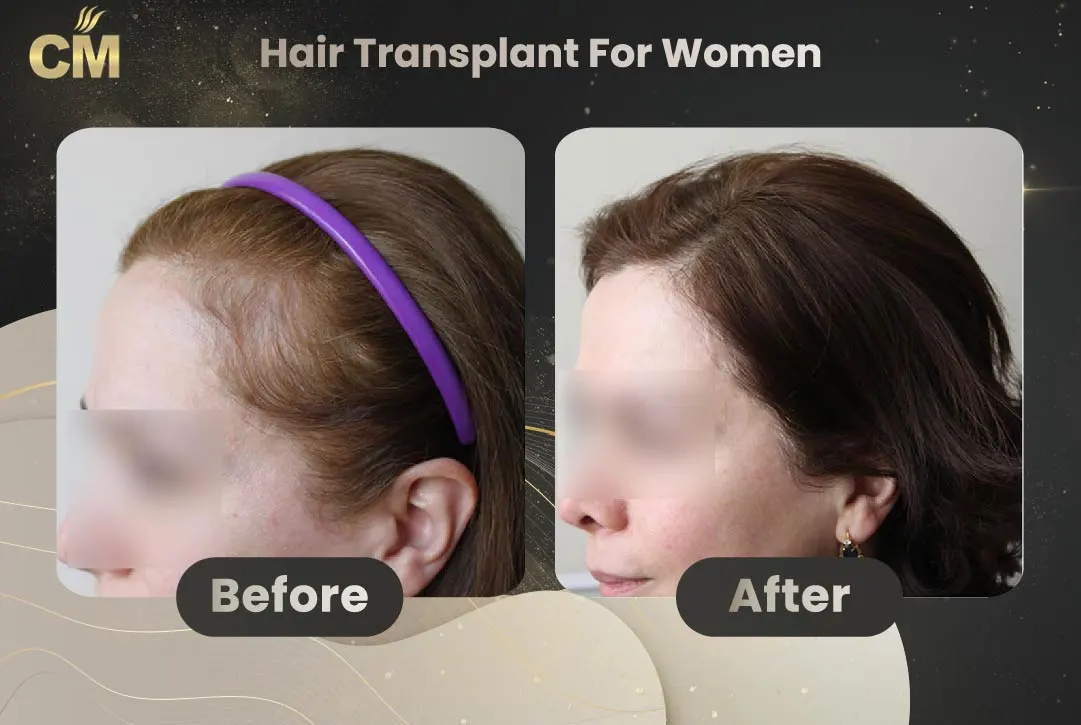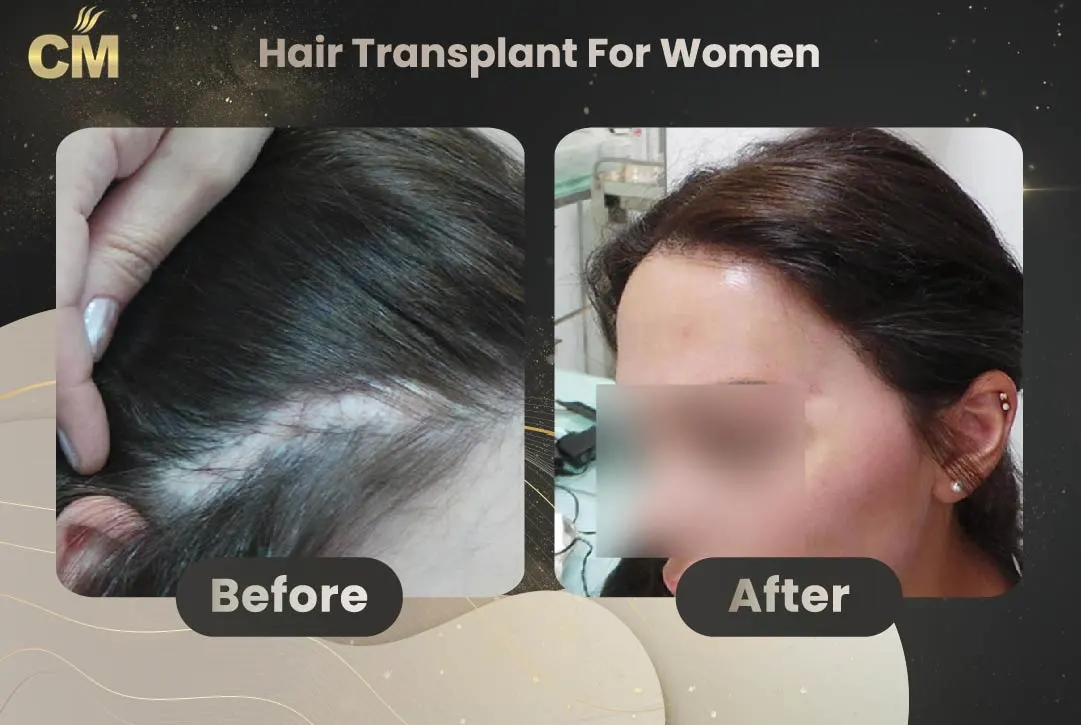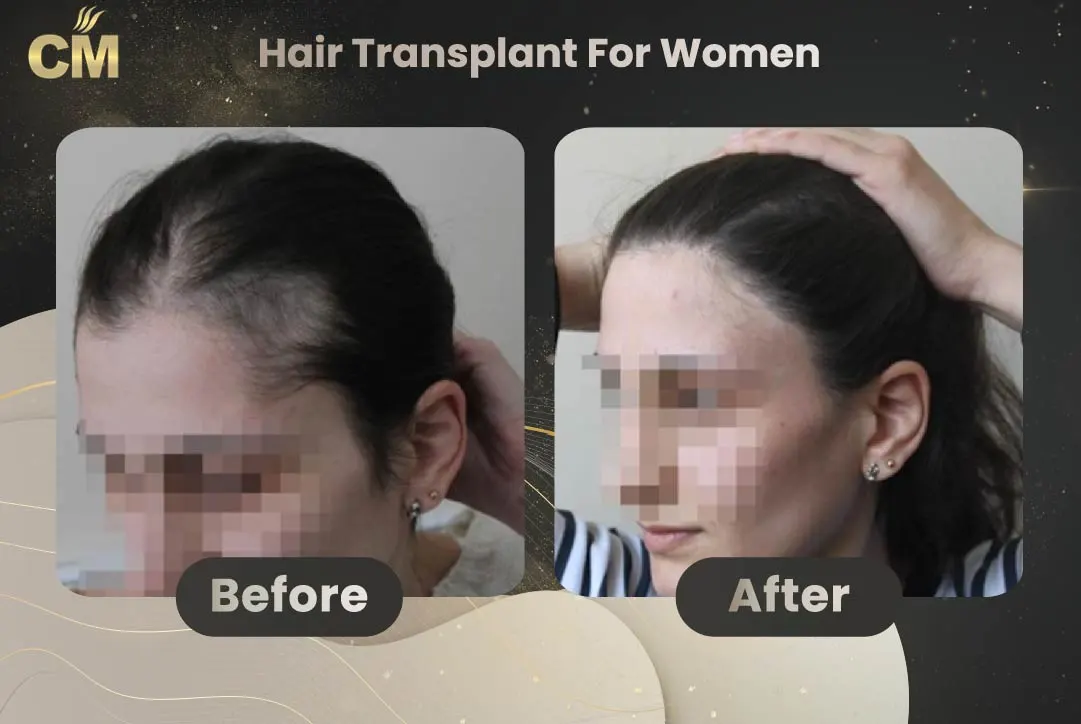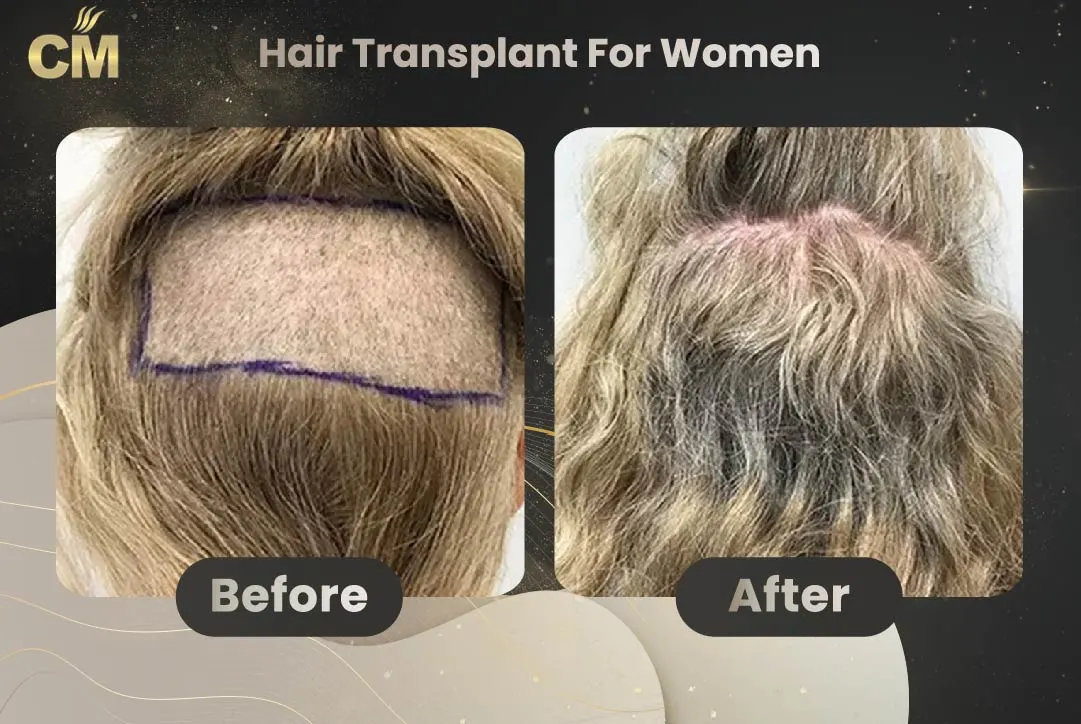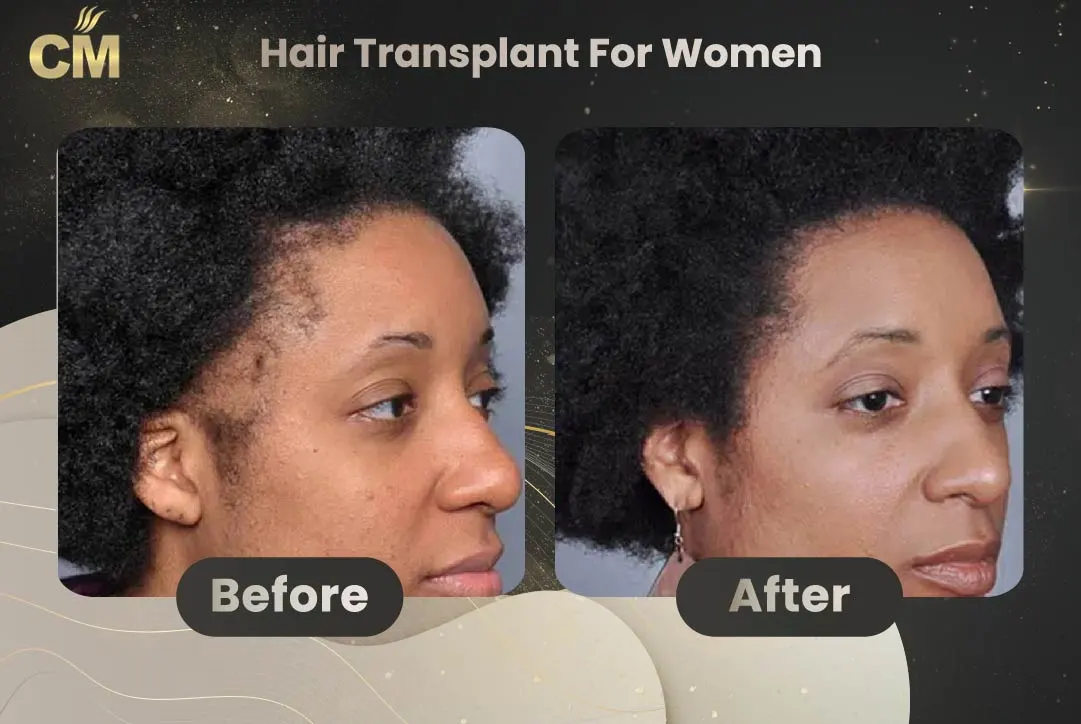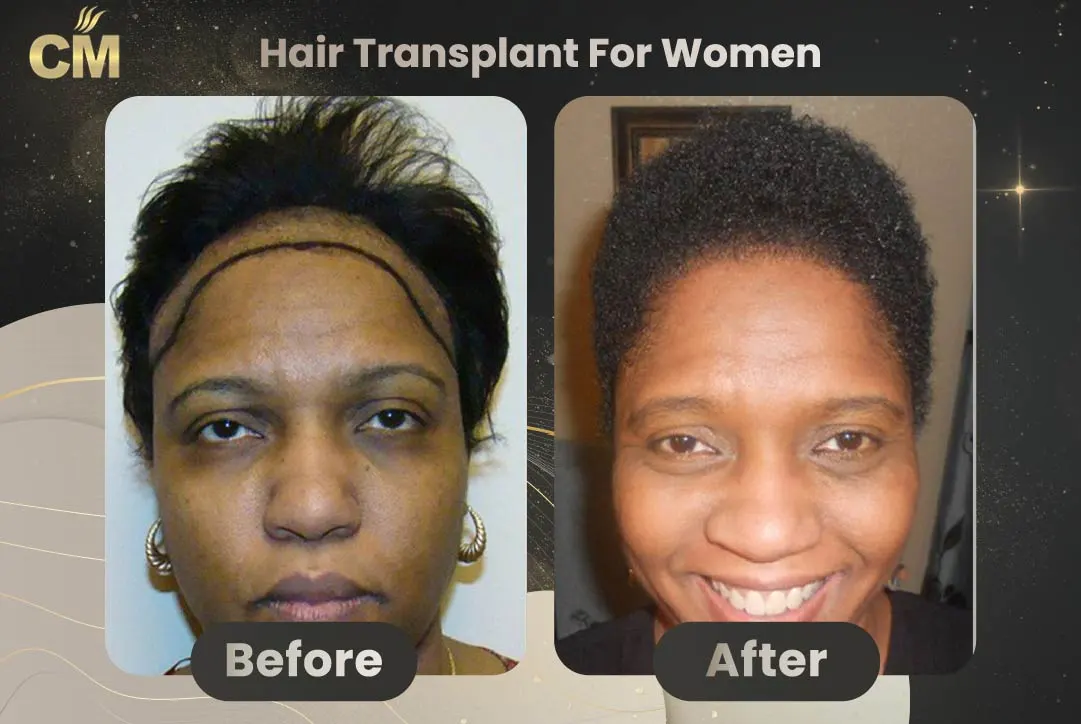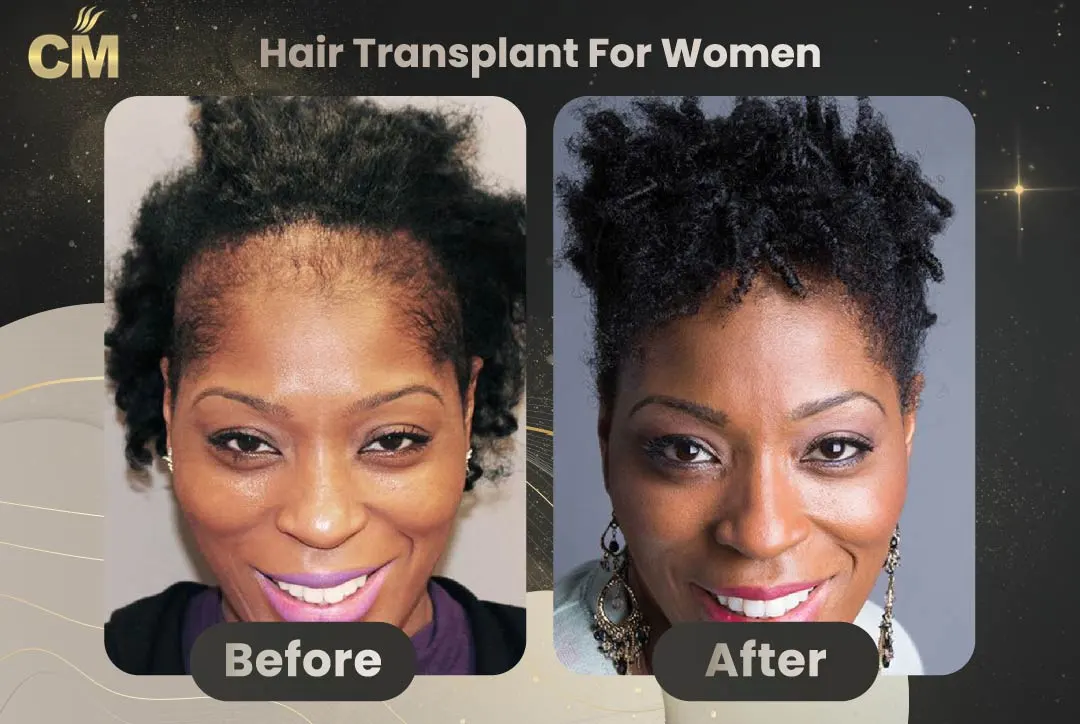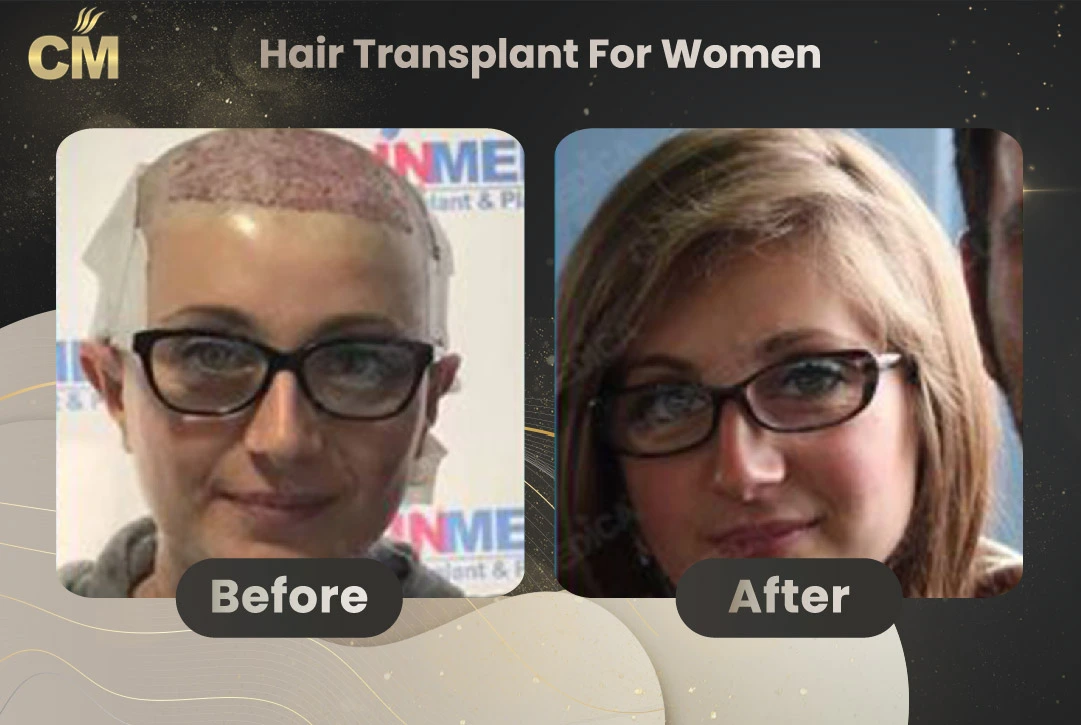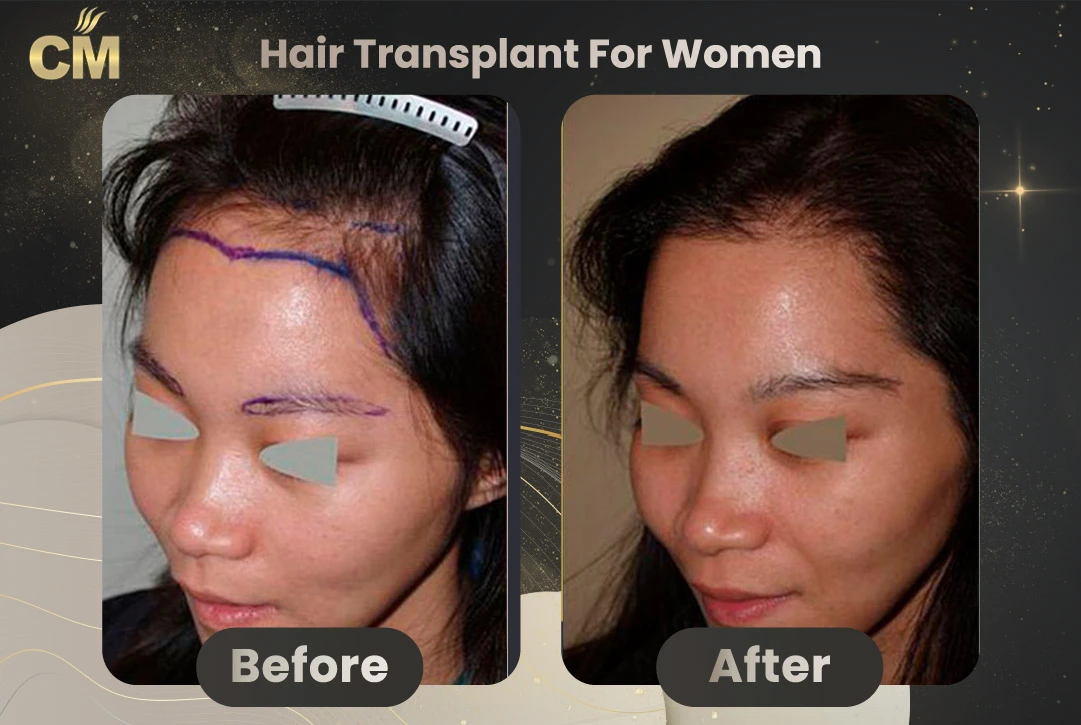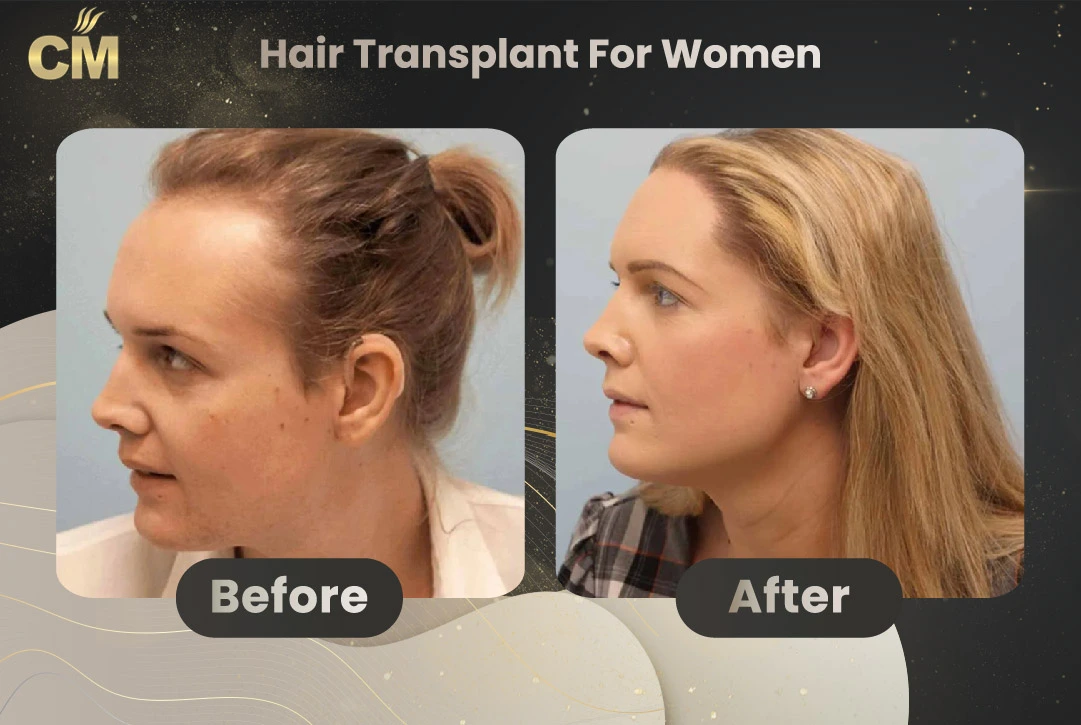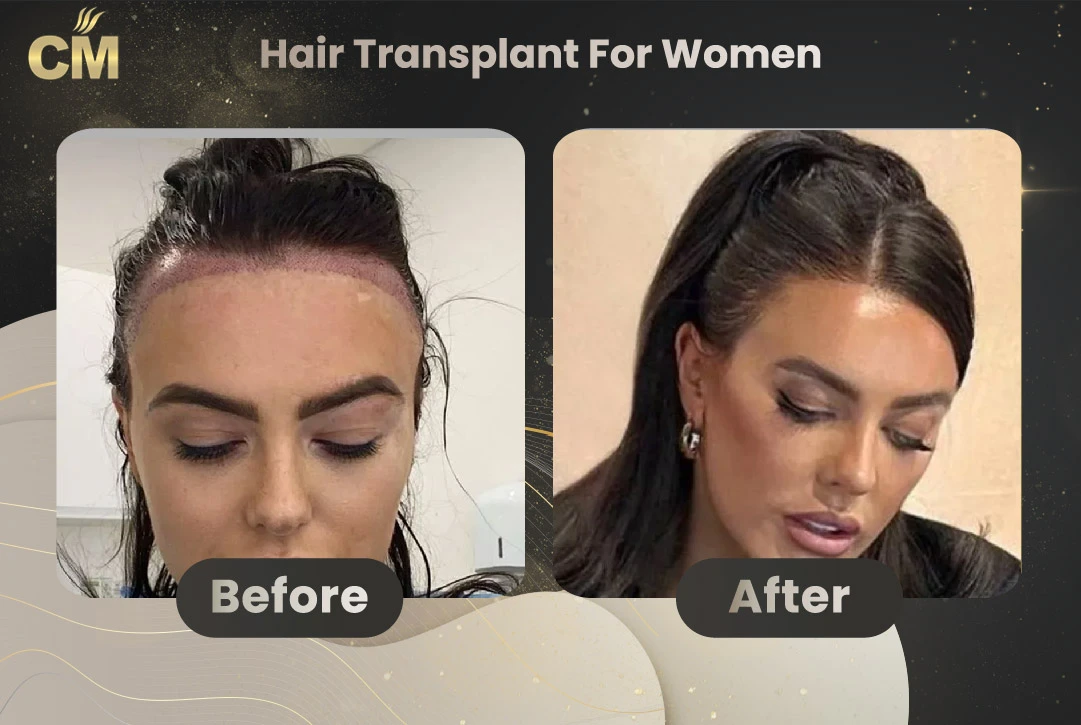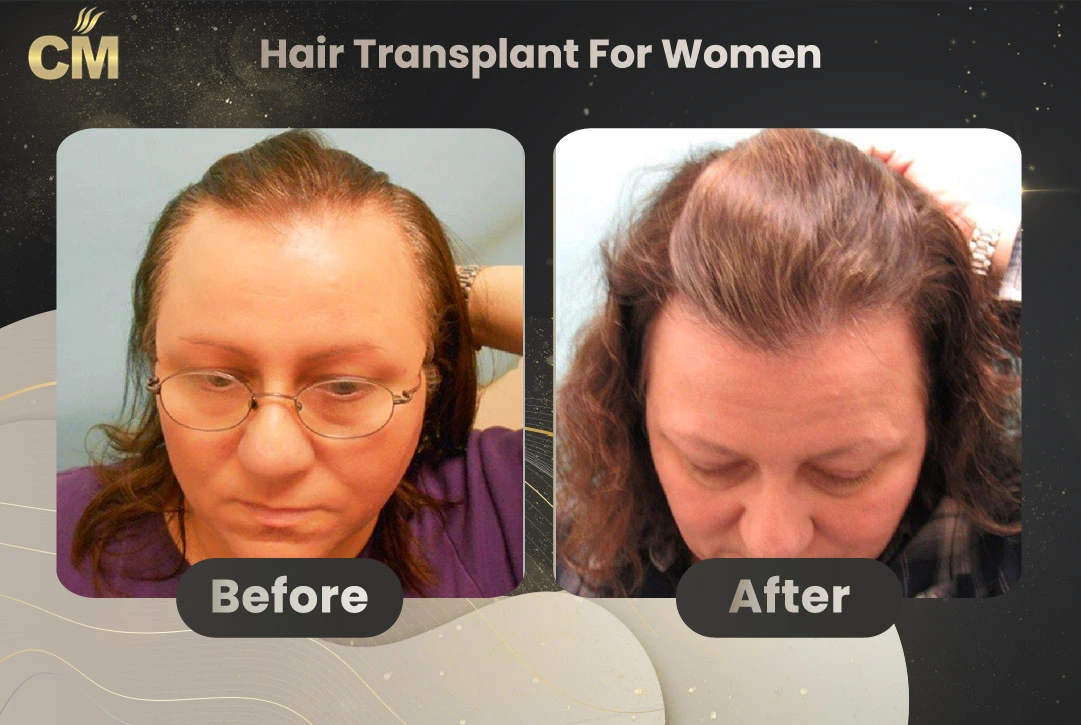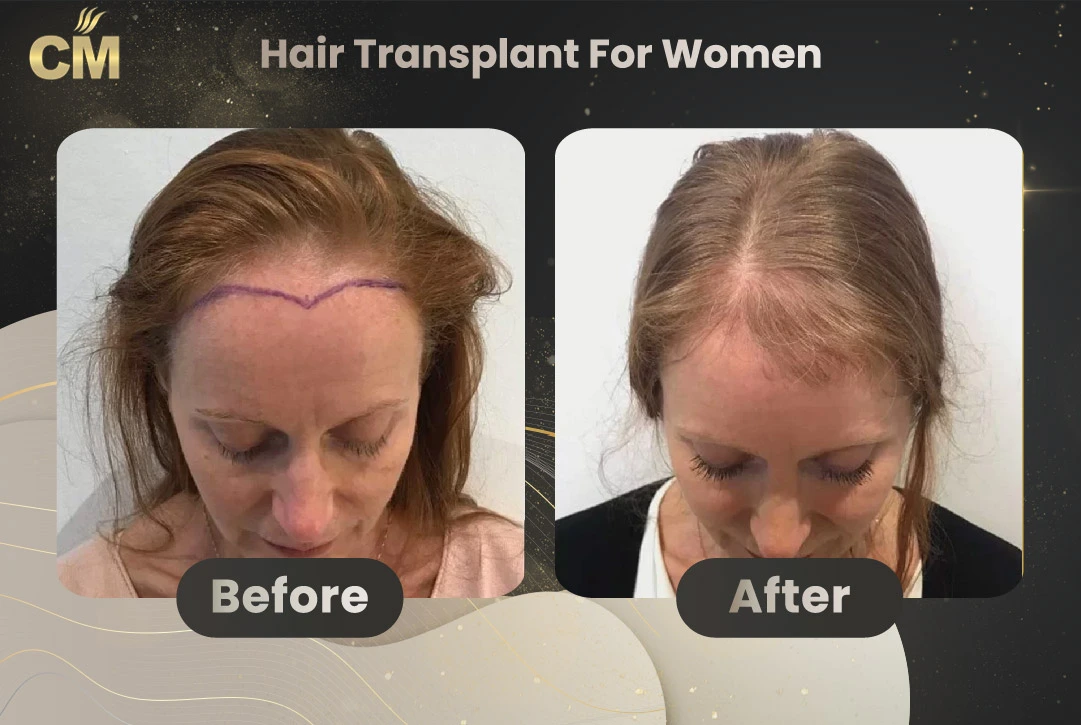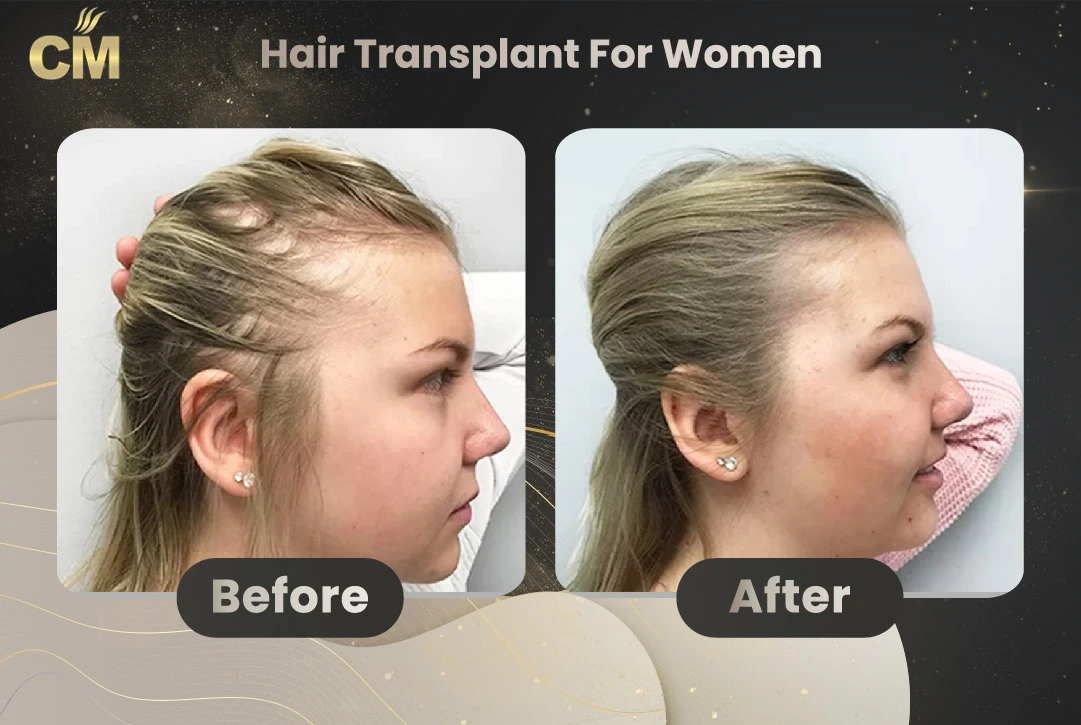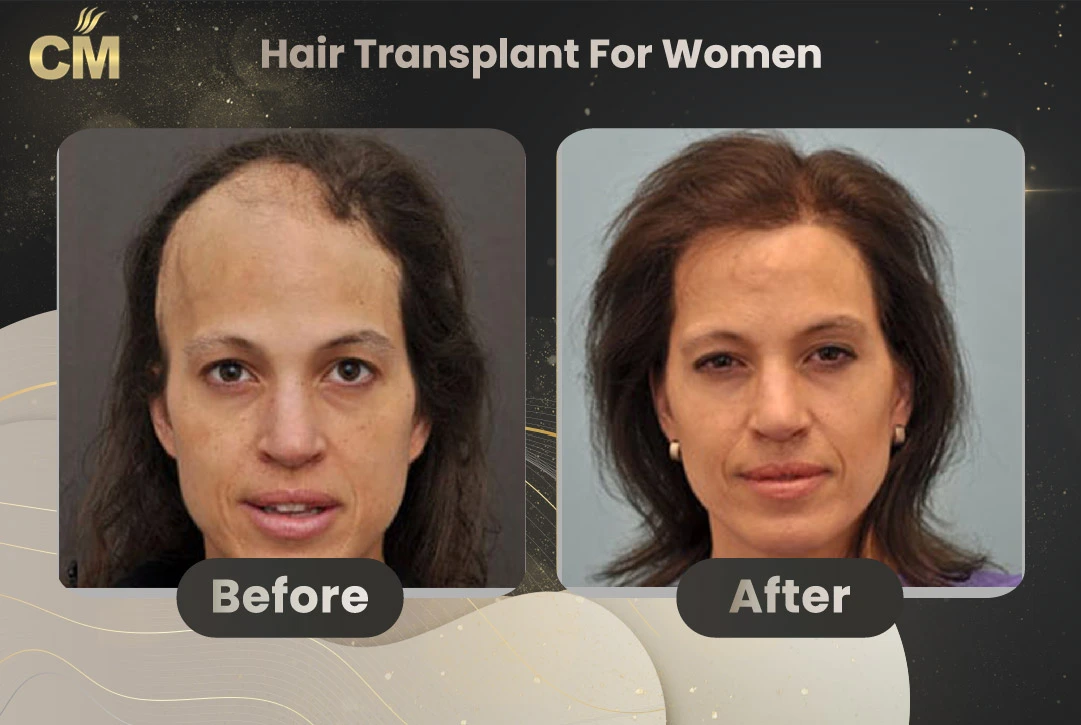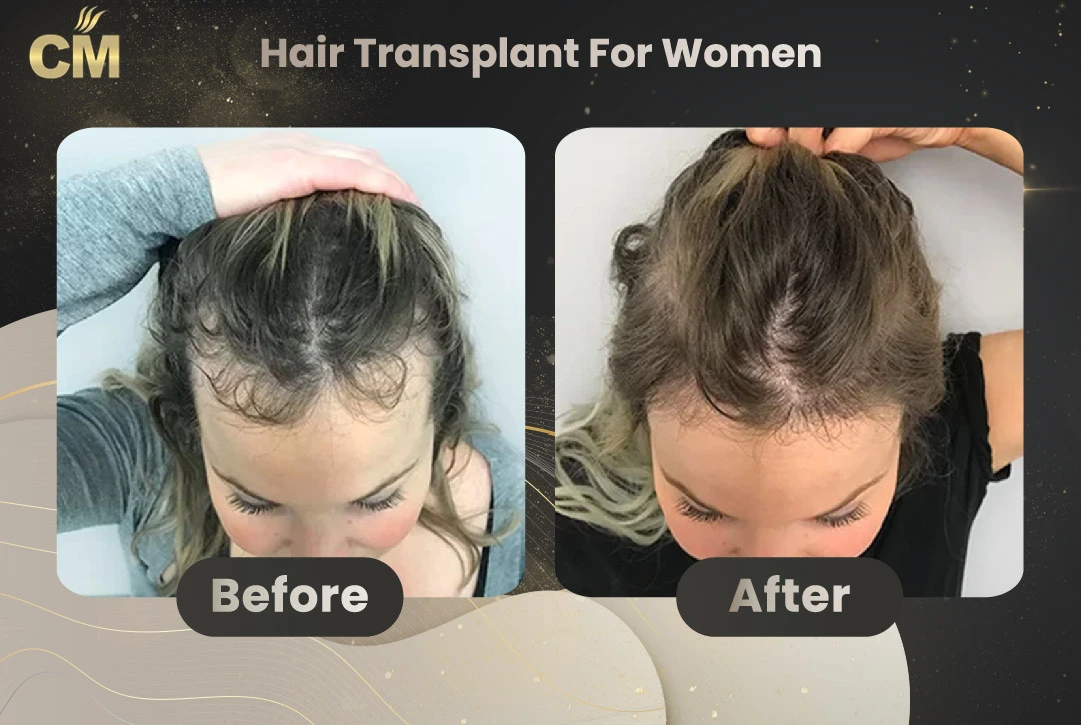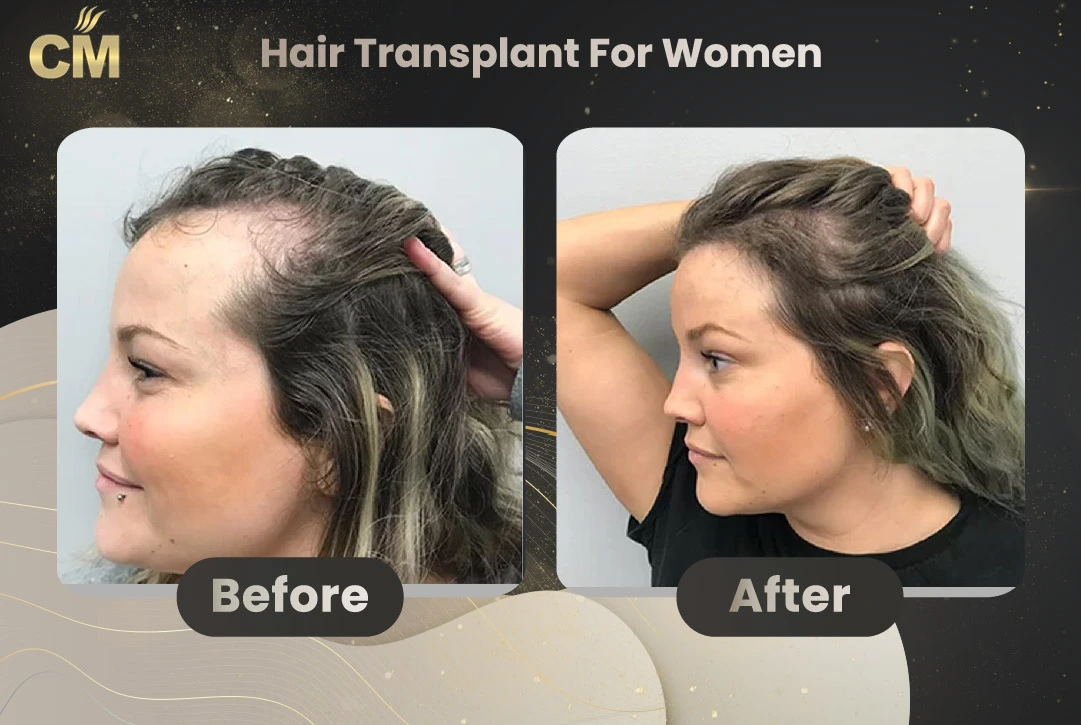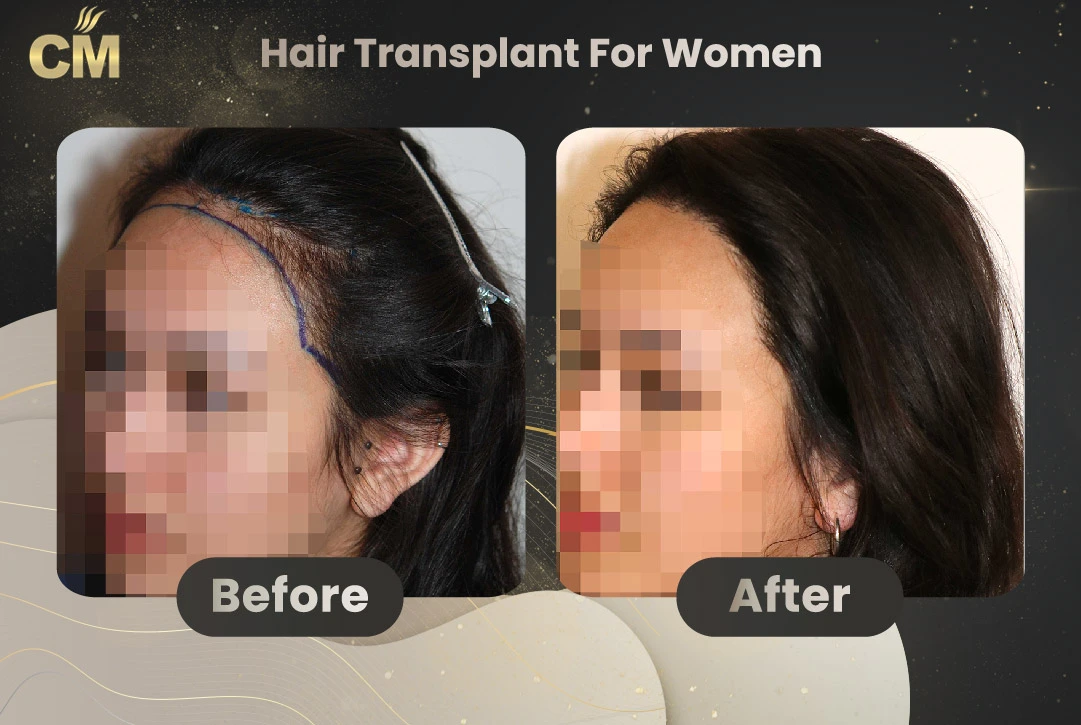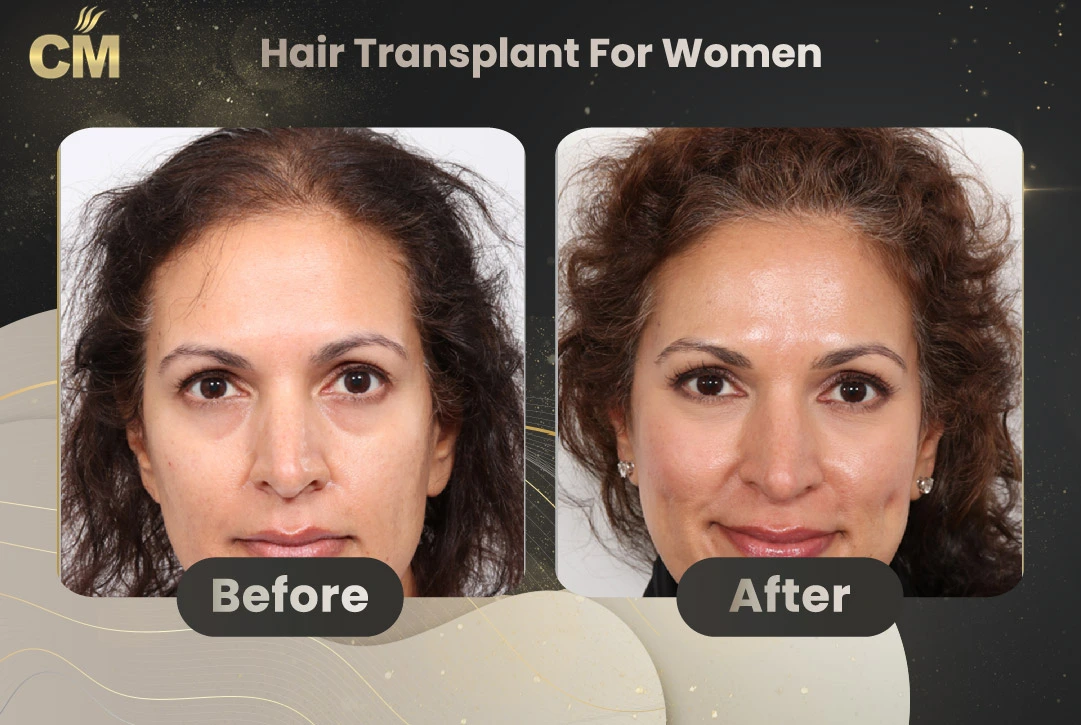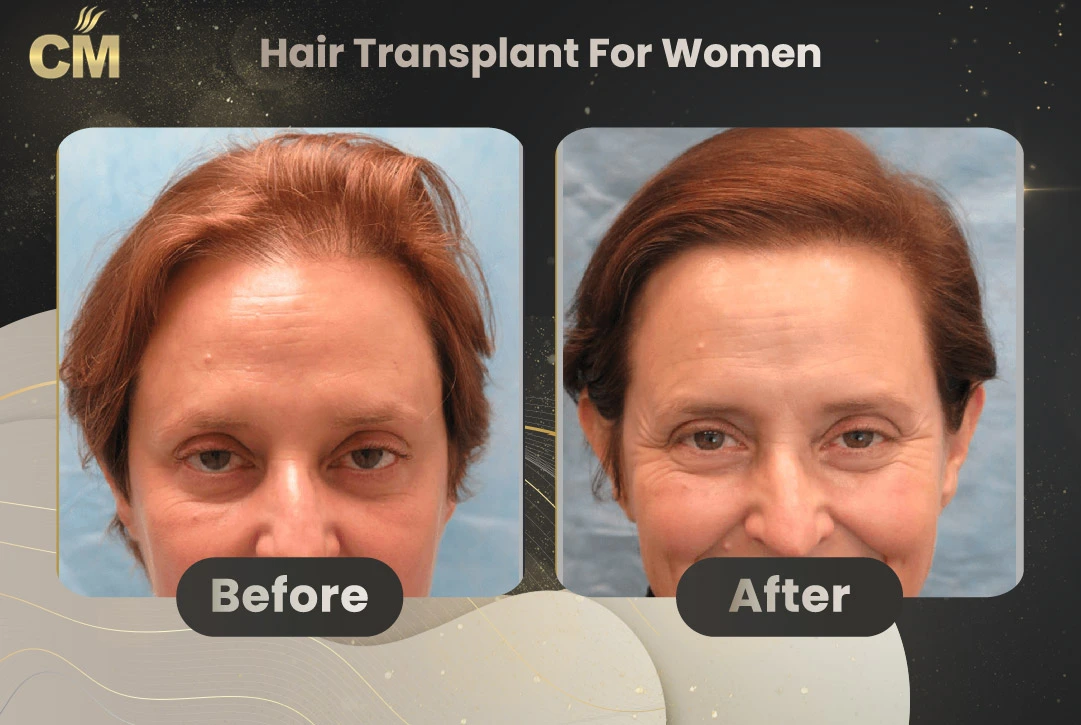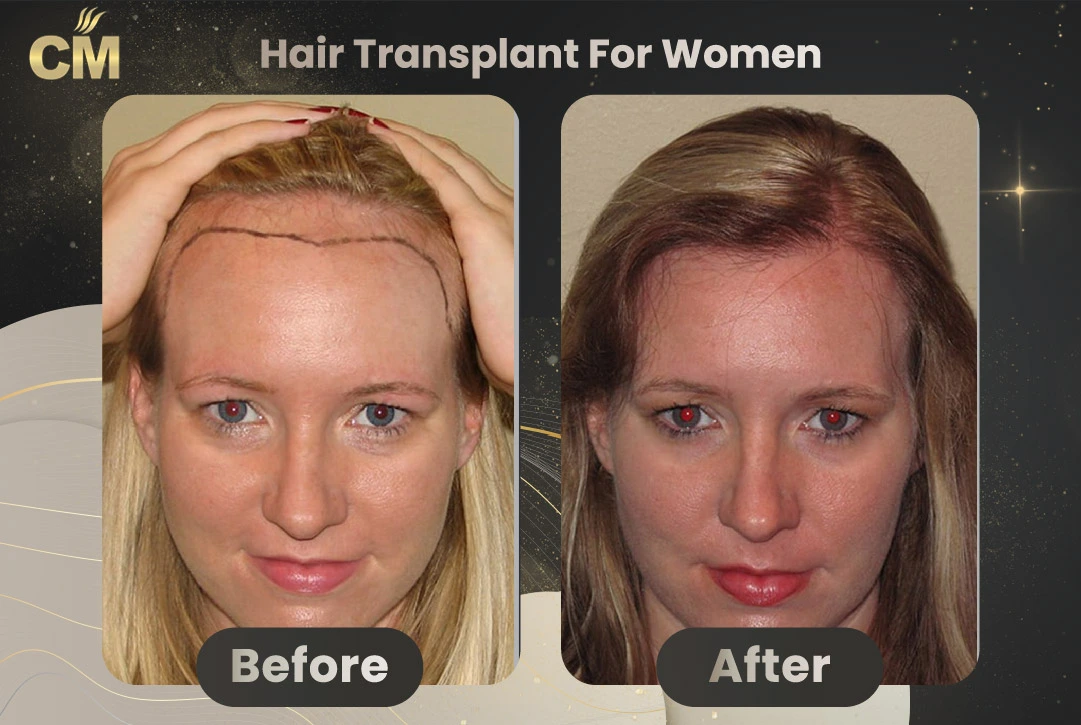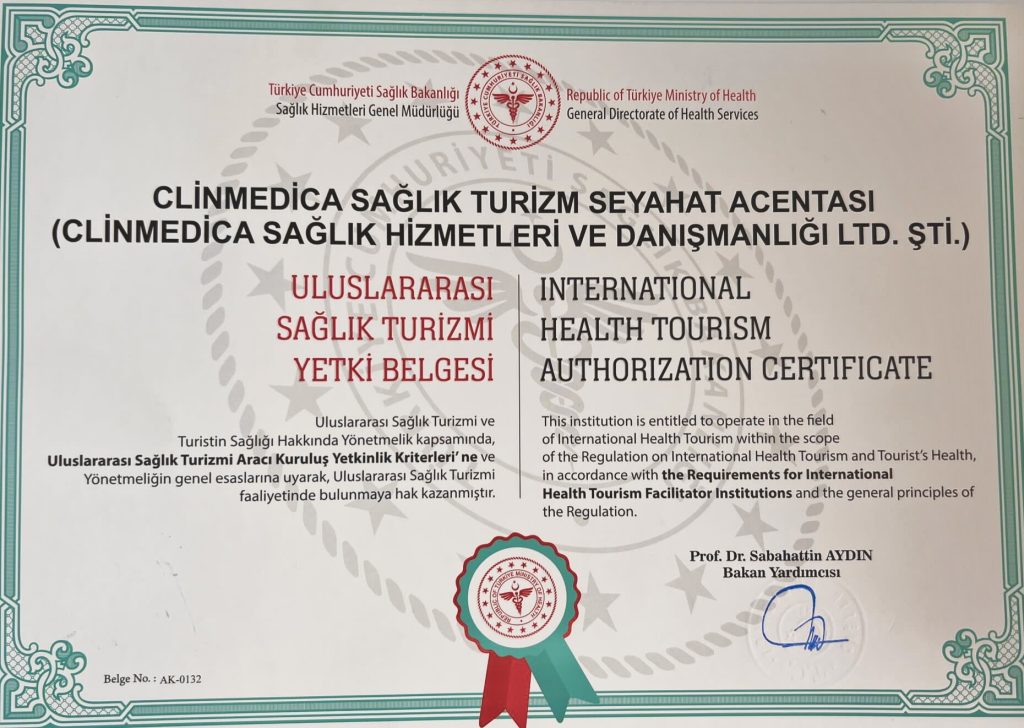Hair loss can be an intensely personal struggle for women, often affecting self-esteem and confidence. At ClinMedica, we recognize the emotional toll this issue can take and specialize in Women Hair Transplant in Turkey, a country at the forefront of hair loss treatments for women. Our advanced procedures are designed to deliver natural, transformative results, helping women regain their confidence and restore their hair. In this article, you will find pictures showcasing the results of women Hair Transplant Before and After operations in Turkey, detailed information about how this procedure is performed, and guidance on what to expect before and after the process. Thanks to advancements in technology, hair transplant procedures are no longer exclusive to men, offering effective and natural-looking solutions tailored specifically for women. This comprehensive guide also covers the causes of hair loss, popular techniques like DHI and Sapphire, patient experiences, results, and the steps to achieving a full, beautiful head of hair.
Understanding Hair Loss in Women
Hair loss in women, while not uncommon, can be triggered by a variety of factors. These may include androgenetic alopecia (female pattern baldness), the most common cause, often influenced by genetics and hormonal shifts. Additionally, traction alopecia, caused by hairstyles that pull on the hair, can lead to hair loss. Temporary shedding, known as telogen effluvium, can occur due to stress, illness, or medication. Moreover, alopecia areata, an autoimmune condition, can result in patchy hair loss.
Why Turkey is a Global Leader in Hair Restoration for women
Turkey isn’t just a popular holiday destination; it’s a global hub for hair restoration, especially for women. This rise is due to several key factors:
- Expertise That Understands Women: Turkish surgeons aren’t just skilled; many specialize in female hair loss patterns, understanding the unique concerns women have, from maintaining their hairstyle during the procedure to achieving natural-looking results that complement their feminine features.
- Techniques at the Forefront: Turkey embraces innovation. While the FUE (Follicular Unit Extraction) method is widespread, it’s the DHI (Direct Hair Implantation) and Sapphire Pen techniques that are revolutionizing hair transplants for women.
- DHI for Preserving Your Style: One of the most appealing aspects of the DHI technique for women is that it often eliminates the need to shave the area experiencing hair loss. This means you can maintain your hairstyle and privacy throughout the recovery process. Only a small area in the donor region needs to be trimmed, which is easily concealed by your existing hair.
- Affordability That Empowers: In addition, the cost of living in Turkey, combined with a thriving medical tourism industry, means high-quality hair transplants are accessible to a wider range of women. This isn’t about cutting corners; it’s about making transformative procedures affordable without compromising on expertise or care.
- Holistic Experience, Not Just Surgery: Furthermore, many clinics in Turkey understand that a hair transplant is more than a medical intervention. It’s a personal journey. They offer comprehensive packages, from airport pick-up to post-operative support, ensuring women feel cared for and comfortable throughout their stay.
Is it Possible for Women to Have Hair Transplant Without Shaving?
This is a question we constantly receive from women who want a hair transplant but are afraid to shave the entire head. Therefore, we will explain to you when to shave the entire head and when to shave only a small area of the donor area:
Often people think that the DHI hair transplantation technique is the most appropriate technique if we do not want to shave our hair, but let me explain to you some details:
Perhaps you will be surprised that I will tell you now that it is also possible to transplant hair without shaving, whether with the DHI technique or the sapphire pen technique.
DHI vs. Sapphire FUE for Women Hair Transplant
Both DHI and Sapphire FUE offer advantages for Women Hair Transplant, with some key differences:
Understanding Hair Loss in Women
Hair loss in women is a common concern, often presenting as a gradual thinning of hair or a receding hairline. While some women notice immediate changes, others may experience a more subtle, diffuse pattern of hair loss that’s harder to detect. Various factors can contribute to this, including:
- Genetics: Female pattern hair loss (androgenetic alopecia) is the most common cause, often inherited from family members.
- Hormonal Imbalances: Similarly, fluctuations in hormones, such as during menopause or postpartum, can trigger hair loss.
- Hair Care Practices: Harsh chemicals in hair dyes and styling products can damage hair and lead to breakage or loss.
- Stress: Furthermore, high levels of stress can disrupt the hair growth cycle, leading to increased shedding.
Important Considerations Before Women Hair Restoration
While most healthy women are suitable candidates for Hair Restoration, certain factors warrant special consideration:
- Medical Conditions: Women with cardiovascular disease, uncontrolled diabetes, or autoimmune disorders should consult with their doctor before undergoing a Hair Restoration for women.
- Donor Area: A healthy donor area with sufficient hair follicles is essential for a successful transplant.
- Realistic Expectations: It’s crucial to have realistic expectations about the results and recovery process. Hair transplants are not an instant fix, and it takes time for the transplanted hair to grow and reach its full potential.
Postpartum Hair Loss
Intensive hair thinning after childbirth is a common experience due to hormonal fluctuations. This is usually a temporary condition, with hair typically regrowing within a few months to a year. However, factors like stress, nutritional deficiencies (such as iron deficiency), and scalp health can influence the recovery process. Maintaining a healthy lifestyle, managing stress, and using gentle hair care products can aid in recovery.
Who is a Good Candidate for a Women Hair Transplant surgery?
women Hair transplant surgery may be a good option for you if you:
- Are experiencing hair loss due to genetics, hormonal changes, or medical conditions.
- Have realistic expectations about the results and the recovery process.
- Are in good overall health and do not have any medical conditions that could interfere with the surgery or healing.
- Have a sufficient amount of donor hair available.The choice between DHI and Sapphire pen depends on your individual preferences, hair characteristics, and desired outcome. Our expert surgeons will guide you through the decision-making process, ensuring you choose the technique that best suits your needs.
(The rest of the article covering the DHI technique, understanding hair loss in women, important considerations, post-partum hair loss treatment for women, planning your hair transplant in Turkey, and a final word of encouragement remains the same.)
Afro Hair Transplant For Women
We recognize that women with Afro hair transplant for women may have specific concerns about hair transplants. Rest assured, Sapphire FUE technique are highly effective for Afro hair transplant for women. Our experienced surgeons are skilled in handling the unique characteristics of this hair type, ensuring that the transplanted hair blends seamlessly with your natural hair for a beautiful, natural-looking result. We take extra care to preserve the curl pattern and density of your hair, resulting in a fuller, more vibrant look that celebrates your unique beauty.
Hair loss can be a challenging experience, but it doesn’t have to define you. With advanced techniques like DHI and Sapphire FUE, experienced surgeons, and a supportive environment, Turkey offers a transformative solution for women seeking to reclaim their confidence and restore their natural beauty.
At ClinMedica, we understand the unique needs of women experiencing hair loss treatment for women in Turkey.
. We are committed to providing personalized care, state-of-the-art techniques, and a safe, comfortable experience throughout your hair restoration journey. Remember, you are not alone, and a fuller, more vibrant you is within reach.
See the afro hair transplant for women results
Causes of a Receding Hairline in Women
A receding hairline in women is a multifaceted issue with numerous underlying causes. Understanding these factors is crucial for identifying effective treatments and preventive measures. Here are some of the primary causes of a receding hairline in women:
1. Genetics
Genetic predisposition plays a significant role in hair loss. Female pattern baldness, also known as androgenetic alopecia, is a common hereditary condition that can lead to a receding hairline. If your family has a history of hair loss, you are more likely to experience similar issues.
2. Hormonal Changes
Hormonal fluctuations, particularly those related to pregnancy, childbirth, menopause, and thyroid conditions, can significantly impact hair growth. During menopause, for example, decreased estrogen levels and increased androgen levels can lead to thinning hair and a receding hairline.
3. Stress and Illness
Both physical and emotional stress can trigger a condition called telogen effluvium, where hair follicles enter the resting phase prematurely, leading to increased hair shedding. Chronic illnesses and treatments such as chemotherapy can also cause significant hair loss treatment for women.
4. Nutritional Deficiencies
A lack of essential nutrients, such as iron, vitamin D, biotin, and protein, can weaken hair and contribute to hair loss. A balanced diet rich in these vitamins and minerals is vital for maintaining healthy hair growth.
5. Hairstyles and Hair Treatments
Regular use of tight hairstyles like ponytails, braids, and buns can cause traction alopecia, a type of hair loss treatment for women.
caused by pulling on the hair shafts. Chemical treatments, including coloring, perming, and straightening, can also damage hair follicles and lead to thinning.
6. Medical Conditions
Certain medical conditions, such as polycystic ovary syndrome (PCOS), lupus, and alopecia areata, can lead to hair loss and a receding hairline. These conditions often require specialized treatments to manage symptoms and mitigate hair loss treatment for women.
7. Aging
As women age, natural hormonal changes and decreased cellular regeneration can lead to thinning hair and a receding hairline. Aging affects the overall health of hair follicles, making them less efficient in producing healthy hair.
8. Environmental Factors
Exposure to environmental pollutants, harsh weather conditions, and UV radiation can damage hair and scalp health, leading to increased hair loss. Protecting hair from these environmental factors is essential for maintaining its integrity.
Planning for women Hair Transplant in Turkey
A women hair transplant in Turkey typically requires a short stay of three days: one for the procedure, one for rest, and one for a follow-up wash.
At ClinMedica, we understand the importance of dedicating ample time and attention to each patient. To ensure the highest quality of care and results, our surgeon performs only one operation per day. This allows for a truly personalized experience, with the surgeon’s full focus on your individual needs and goals.
The ClinMedica Difference – Personalized Care and Advanced Techniques
At ClinMedica, we elevate our commitment to Hair loss treatment for women through:
- One Patient, One Focus: Our surgeon performs only one operation per day. This allows him to dedicate his full attention and expertise to each individual, ensuring a personalized approach and meticulous attention to detail.
- Hygiene as a Priority: We prioritize your safety and well-being. Tools like our Choi pens (for DHI) and Sapphire blades (for FUE) are used only once, adhering to the strictest hygiene standards.
- Tailored Techniques: We specialize in both DHI and Sapphire FUE, allowing us to recommend the best approach for each woman’s unique hair characteristics and goals. We understand that many women prefer to avoid shaving their head, and our expertise in DHI makes this a viable option.
What to Expect After Women Hair Transplant
Like any surgical procedure, Women hair transplants can have temporary side effects, including:
- Edema (Swelling): This may occur in the donor area and the recipient area.
- Itching: Your doctor may prescribe antihistamines to manage any itching.
- Shock Loss: Some transplanted hairs may shed initially, but this is a normal part of the process. The hair follicles remain intact and will produce new, permanent hair.
Hair Transplant Options for Women
A Path to Restoration
Hair transplant surgery provides a path to restoration for women experiencing hair loss. This procedure involves harvesting healthy hair follicles from a donor area, typically the back of the scalp, and transplanting them to areas with thinning or no hair. For women, this often means addressing a thinning hairline to achieve a more youthful appearance, filling in a widening part to create the illusion of thicker hair, or combating hair loss on the crown of the head.
Addressing the Shaving Concern
One of the most common concerns for women considering hair transplants is the need to shave their heads. However, modern techniques like Unshaven FUE (UFUE) address this issue by selectively shaving small portions of the donor area, leaving most of the surrounding hair intact. This is particularly beneficial for women with longer hair who wish to maintain their hairstyle.
DHI vs. Sapphire Pen
Comparing Hair Transplant Techniques
Two popular hair transplant techniques used for women are Direct Hair Implantation (DHI) and the Sapphire pen technique. Both offer excellent results, but they have distinct characteristics:
| Feature | DHI (Choi Pen) | Sapphire Pen |
|---|---|---|
| Hair Density | Up to 50 follicles/cm2 | Up to 40 follicles/cm2 |
| Precision | High precision due to individual follicle placement | High precision due to sharp, V-shaped Sapphire tip |
| Scarring | Minimal, often invisible | Minimal, slightly more noticeable than DHI |
| Graft Session | Lower graft count per session (1500-3500) | Higher graft count per session (5000-6000) |
| Shaving Requirements | Donor area only | Donor area and recipient area |
| Ideal For | Smaller areas, existing hair, highest density needed, women who prefer to avoid shaving the recipient area | Larger areas, dense packing, cost-effective |
Real Transformations
Real women have experienced remarkable transformations through hair transplants, regardless of the chosen technique:
-
Sarah’s Story (DHI): Sarah, struggling with a thinning hairline, chose DHI for its precision and high-density potential. Now, she proudly showcases a full, natural hairline that enhances her facial features.
-
Maria’s Journey (Sapphire): Facing significant hair loss on her crown, Maria opted for the Sapphire pen technique to achieve impressive density across a larger area. Today, her hair is thicker and fuller than she ever thought possible.
Preparing for Your Hair Transplant Journey
Embarking on a hair transplant journey involves careful consideration:
- Consultation: Discuss your goals, expectations, and medical history with a qualified hair transplant surgeon. This is also the time to express any concerns about shaving and explore unshaven FUE options.
- Recovery: Be prepared for the post-procedure recovery process and meticulously follow your surgeon’s instructions for optimal results.
Reclaim Your Confidence and Hair
If hair loss is affecting your self-esteem, hair transplant surgery can offer a life-changing solution. By understanding the various techniques available and consulting with a qualified surgeon, you can make an informed decision and embark on a path to regain your confidence and flaunt your beautiful, healthy hair.
Don’t let hair loss hold you back. Take the first step today and explore the possibilities that await you with hair transplantation in Turkey.
Hair Transplant for Women Before and After in Turkey
A Comprehensive Guide
Hair transplant procedures are no longer just for men—women experiencing hair loss due to genetics, hormonal changes, or other factors can also benefit from this innovative solution. Hair transplants for women are becoming increasingly popular, especially for those looking to restore volume and confidence. For those considering a hair transplant in Turkey, this guide provides an in-depth look at the recovery process, post-surgery care, and important travel tips.
What to Expect After a Hair Transplant for Women
Recovery Process
The recovery process after a hair transplant is typically straightforward but requires attention to detail to ensure the best results. For women, the first few days following the procedure may involve some redness, swelling, or mild discomfort in both the donor and recipient areas. Small scabs will form around the newly implanted follicles, which usually fall off within 7–10 days. Most women can return to their daily routines, including work, after a week. Full recovery, including the start of new hair growth, can take several months.
Resuming Physical Activities After Surgery
While light activities, such as walking, can be resumed almost immediately after the procedure, strenuous activities and sports should be avoided for at least two weeks. This includes any form of exercise that causes excessive sweating or puts pressure on the scalp, as this can interfere with the healing process. Your surgeon will provide a detailed timeline on when you can safely return to more intense physical activities.
Maintaining the Results of a Hair Transplant for Women
Maintaining the results of a hair transplant requires proper aftercare and a healthy lifestyle. To preserve the newly transplanted hair, it’s important to follow your surgeon’s instructions on scalp care, including the use of prescribed shampoos and avoiding harsh treatments. Once the hair begins to grow, regular care, such as gentle shampooing and avoiding heat styling tools, will help maintain the results. Additionally, a balanced diet and hydration will support ongoing hair health.
Scarring After a Hair Transplant
The advanced techniques used in hair transplants today, such as FUE (Follicular Unit Extraction) or DHI (Direct Hair Implantation), leave minimal scarring. For women, the small incisions made during the extraction and implantation process heal quickly and are often concealed by the surrounding hair. With proper aftercare, any minor scarring from the procedure will fade over time and become virtually undetectable.
Understanding the Risks of a Hair Transplant for Women
As with any medical procedure, there are potential risks involved, including infection, poor healing, or temporary loss of hair in the treated area (shock loss). However, these risks are minimized when the procedure is performed by experienced surgeons, like those at ClinMedica. Following post-operative care instructions and attending follow-up appointments help ensure that complications are avoided and optimal results are achieved.
Benefits of a Hair Transplant for Women
The primary benefit of a hair transplant for women is the restoration of hair in thinning or balding areas, resulting in a fuller, more youthful appearance. Unlike temporary solutions such as wigs or extensions, a hair transplant provides a permanent solution with real, growing hair. This procedure not only restores volume but also boosts self-confidence and provides long-term satisfaction with natural results.
Who Is Not a Suitable Candidate for a Hair Transplant?
Not all women are suitable candidates for a hair transplant. Patients with advanced alopecia, insufficient donor hair, or certain medical conditions such as uncontrolled diabetes may not be ideal candidates. Additionally, women with unrealistic expectations or those experiencing hair loss due to medical conditions that cause continuous hair thinning should consult with their surgeon to determine if a hair transplant is the right option for them.
Things to Do After a Hair Transplant
Key Post-Operative Care Steps
Post-operative care is crucial for ensuring a successful recovery and optimal results. After the procedure, it’s important to keep the scalp clean and avoid touching or scratching the treated areas. Your surgeon may prescribe specialized shampoos or ointments to support healing and hair growth. Additionally, staying hydrated and maintaining a healthy diet will contribute to better results.
Things to Avoid During Recovery
During recovery, avoid swimming, saunas, or any activities that expose the scalp to excessive moisture or heat for at least two weeks. Sweating can increase the risk of infection and disrupt the healing process, so it’s important to avoid vigorous physical activities during this time. Additionally, avoid using chemical treatments or heat styling tools on the hair for several weeks after the procedure.
How Long Should You Stay in Istanbul for the Procedure?
For international patients traveling to Turkey for a hair transplant, it is recommended to stay in Istanbul for at least 2–3 days. This allows sufficient time for the procedure and any necessary follow-up appointments to ensure everything is healing as expected before you return home.
How Many Nights Will You Stay in the Hospital?
Hair transplants are usually performed as outpatient procedures, meaning you can return to your accommodation the same day. There is no need for an overnight hospital stay. However, follow-up appointments will be required to monitor the progress of your recovery and ensure optimal results.
Pre-Procedure Instructions for International Patients
If you are traveling to Turkey for a hair transplant, it’s important to be well-prepared:
- Medical Preparation: Complete any necessary medical tests and provide your surgeon with a detailed medical history, including any medications or supplements you are taking.
- Packing: Bring loose, comfortable clothing and a hat to protect your scalp after the surgery.
- Flexible Flight Plans: Arrange flexible flights in case your recovery takes longer than expected.
- Documentation: Carry all relevant medical records, including test results and surgical clearances from your healthcare provider.
Do You Need a Companion for the Procedure?
While a companion is not required for a hair transplant, having someone with you can be helpful, especially during the first day of recovery. A companion can provide support, help with daily tasks, and ensure your comfort after the procedure. If you are traveling alone, consider arranging for post-operative care at your accommodation.
What Should You Do After a Hair Transplant?
Post-Surgery Instructions
Your surgeon will provide specific post-surgery instructions, including how to care for your scalp and avoid touching or washing the treated areas for the first few days. Follow-up appointments are essential to monitor the progress of your recovery and ensure that the transplanted follicles are growing as expected. Be sure to follow all instructions closely for the best results.
Traveling Home After Surgery
Guidelines for Airport and In-Flight Care
If you’re flying home after a hair transplant, particularly on a long-haul flight, follow these guidelines:
- Timing Your Flight
Plan to stay in Istanbul for at least 3–5 days after surgery to allow for initial healing and a follow-up check before flying home. - In-Flight Care
During the flight:- Stay Hydrated: Drink plenty of water to prevent dehydration and promote healing.
- Avoid Touching Your Scalp: Keep your hands away from the transplant area to avoid disturbing the newly implanted grafts.
- Wear Comfortable Clothing: Choose loose, comfortable clothing to avoid pressure on the scalp.
- Pain Management: Carry any prescribed pain medications in your carry-on luggage and take them as directed by your surgeon.
- Airport Assistance
Consider requesting assistance, such as help with luggage or a wheelchair, to avoid overexertion at the airport. Avoid carrying heavy bags or engaging in strenuous activities that may strain your scalp. - Long-Haul Flight Considerations
For long-distance travel, take frequent breaks to stretch and move around to maintain circulation. Plan for additional rest days once you return home to allow your body to continue healing before resuming normal activities.
By following these post-surgery and travel guidelines, you can ensure a smooth recovery and a safe journey home after your hair transplant. ClinMedica provides comprehensive care instructions to help you achieve the best possible results.
When Will You See the Final Results?
The final results of a hair transplant for women may take several months to become fully visible. After the initial shedding phase, new hair growth begins around 3–4 months post-surgery, with full results typically visible after 9–12 months. The transplanted hair will continue to grow naturally and provide long-lasting improvements in both density and overall hair health.
